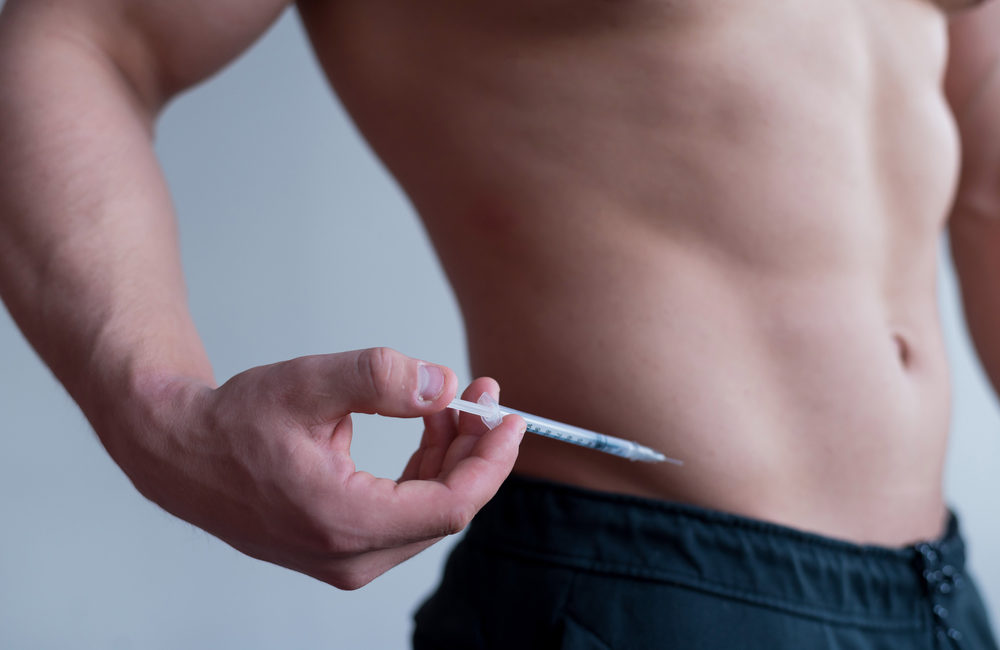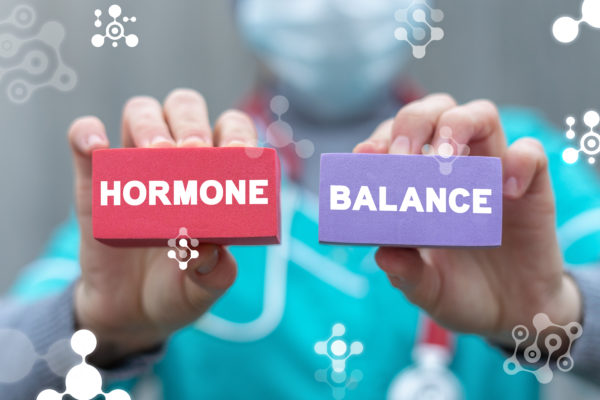Our society is unfortunately full of inaccurate stigmas, social pressures created due to incorrect information that spreads throughout the populace and is often amplified through our modern-day rumor mill, social media.
Gossip may have been an important part of the evolution of man in our distant past, as some historical anthropologists believe that it found its start among women in hunter-gatherer societies who would share information about the men they could or could not trust, or kept the tribe informed about things that needed to be known to ensure their survival.
Now, however, rumors, gossip, and widely circulated inaccuracies can often cause great harm by leading people to believe things that aren’t true, or even worse – preventing people from getting the help they need.
The last part is likely most damaging to the males in our society, as the quintessential image of a man includes ones who do not complain and do not show weakness or pain. What is considered weakness can vary widely from person to person, but in males the reticence to seek help when needed due to a fear of being seen as weak can often cause tremendous damage.
One of the places where this is currently being seen in unfortunately high numbers in our society is low testosterone, and the catastrophic issues that can be caused by men hesitating to even be checked for potential low levels, even though they display the telltale signs. While they may fear being seen as weak for even hinting at the idea that their testosterone levels are falling dangerously low, the consequences of not finding out and remedying the situation can have effects that ripple across the entire society.
Testosterone is the hormone most commonly associated with manliness, as it helps regulate a man’s muscle mass, fat distribution, sexual libido, body and facial hair, energy levels, and even their sense of well-being. So why would men being tired, gaining weight, losing muscle mass, being depressed, and having a low sexual appetite matter to society?
There is a very important number that can cause societies to thrive or crash, and it has nothing to do with economics, GDP, or employment. That number is called the “replacement number,” the number of children that an average family needs to have in order for society to continue to grow. If they don’t maintain that number, they begin what is called the “demographic death spiral” as fewer and fewer young people are born and take their part to keep the society running.
The commonly agreed-upon replacement number for the USA is 2.1. This doesn’t mean that every family needs to have 2.1 children, as it would be pretty difficult to have 0.1 kids. It does mean that on average, throughout the whole society (the USA has around 360 million people), the average should be 2.1.
According to the World Bank, the current birth rate in the USA is 1.7. That means that, at our current rate, our society is deemed to fall into a demographic death spiral of its own at some point and cease to be. This is part of the reason we hear so many people worried about the social security system failing – there aren’t enough young people coming of age and entering the workforce to keep the system going.
So while low sexual appetite and men who don’t have the energy or interest to get married and start families may seem like a trivial matter, it can actually be an extremely important issue.
We’ll get into the details shortly, but if you’re here to learn specifically about the injection of TRT, then here is what you need to know:
Normally testosterone is injected into the buttocks, outer-mid thigh, or shoulders. Doses can range from 50mg per dose, multiple times a week, or one large dose of up to 200mg a week. Typically TRT can range from 50mg-200mg weekly depending on your needs and how you respond to therapy. Your anti-aging specialist will help you determine what’s best for you.
Why is This Happening?
That’s a difficult question to answer, especially since there haven’t been any studies to directly answer it. There is plenty of anecdotal evidence and research on other topics that may lead us to some answers, though.
One cause could be the rapidly falling sperm count found in males in the western world. A study published in the journal Human Reproductive Update found that sperm counts in western males have essentially halved since the 1970s, dropping from 99 million sperm per mL to 47 million. While some experts tell people not to fear and that these numbers are still well within normal ranges, it doesn’t take a rocket scientist to see that putting this in light of our declining birth rate means that something is very wrong.
Other experts attribute the declining sperm count issue to chemicals found in just about everything we use on a daily basis, from foods to soaps and even the plastics that our food is contained within. Some of these chemicals are known to be endocrine disruptors, which means they can affect the system within the human body which regulates our hormones.
But there is another, silently lurking issue that may be playing a role in both our society’s declining birth rate and the sperm count of males in the western world: low testosterone.
What Can Cause Low Testosterone Levels in Males?
This is where the male psyche is part of the problem that we may be dealing with. As the sex who was far more likely to be raised with the, “rub some dirt in that injury and walk it off” mentality, men today may often see the signs and symptoms of low testosterone showing up in their daily lives and think they can just power through it, lift more weights or eat more steaks to fix the issues. But they would be wrong, and the hesitance to seek answers and treatment may be causing both health issues with them and societal issues for all of us.
Low testosterone levels can be caused by a lot of things, but there is one factor that we have seen rise exponentially in our society over the past few decades, and parabolically over the past two years: stress.
When they think about stress, most men simply think that it’s a feeling that comes from being overworked or fighting with their loved ones. But stress can be physiological – meaning caused by physical actions – and not just mental. A poor diet, lack of sleep, heightened emotions, and fear can all cause massive stressful disruptions to your body, and each of these may predicate a dangerous drop in testosterone levels for males.
A study published in The Lancet (one of the most respected medical journals on the planet) found that the prolonged and stressful situations that active-duty military soldiers were put in, including lack of sleep and poor diet, caused their bodies to create as much as 65% lower testosterone levels. This is because stressful situations cause your body to go into, “fight or flight” mode, in which your body releases a hormone called cortisol to help you deal with the stress.
This study found that Testosterone Replacement Therapy in those soldiers helped increase their testosterone levels profoundly, enabling them to perform at much higher levels. Other studies have found that lower testosterone levels may be directly related to an incidence of PTSD in soldiers who see combat, which creates a vicious cycle: a soldier is deployed and is constantly stressed, so their body increases cortisol levels and reduces testosterone production. Because of the reduced testosterone production, that same soldier is more likely to be affected by PTSD.
This effect is seen as so great that one medical professional has called low testosterone the, “signature injury of the war on terror.”
But if you think about all that our society has gone through over the past two years – economic instability, high unemployment, lockdowns, and business closures, the constant panic that media reports have put all of us in and the resulting inter-family strife that it has caused – we have all been under a massive amount of stress that may be further exacerbating a society whose men are already seeing their sperm counts and testosterone levels decline.
What are the Signs and Symptoms of Low Testosterone?
As with nearly everything health-related, there are a set of known signs and symptoms that are associated with the issue of low testosterone, but not all will be present in everyone. The signs and symptoms are:
- Low sex drive (libido)
- Erectile dysfunction
- Fatigue and poor energy level
- Decreased muscle mass
- Body and facial hair loss
- Difficulty concentrating
- Depression
- Irritability
- Low sense of well-being
If you do have some of these signs and symptoms, it may be worth having your testosterone levels checked by a professional – but you don’t have to check every single one of these boxes to know that you are being affected by low testosterone.
What is the Treatment for Low Testosterone?
As discovered in the study performed on members of the military-linked above, Testosterone Replacement Therapy has been found to be an excellent treatment for low testosterone. Many may resort back to the social stigmas and think of anabolic steroids whenever they hear the term, but Testosterone Replacement Therapy is a very different process (that is regulated and diagnosed by medical professionals) than an athlete taking steroids.
For Testosterone Replacement Therapy to be appropriate for you, you don’t have to be an athlete and you don’t have to be a soldier or veteran of the military. As we discussed already, there are far more issues in our society today that are causing stress and endocrine issues than war.
Testosterone replacement therapy can be taken via many different routes. There are patches, pills, gels, and injections. Although for reasons that we will discuss further below, the injections are generally agreed upon as being the best method.
What are Testosterone Replacement Therapy Injections?
Testosterone Replacement Therapy injections are the process by which a patient who has been diagnosed with low testosterone is administered their testosterone replacement by injection. This can be done in a medical practitioner’s office, but often for cost and time efficiency, the patient will inject themselves in the comfort of their own home.
The replacement therapy administered will vary both in amount and frequency depending on the person, and both will be determined by the medical professional who diagnoses and prescribes the treatment. We will further discuss the specifics of how the injections can be administered below.
Why Injections are Better Than Other Forms of Testosterone Replacement Therapy
While Testosterone Replacement Therapy can come in many different forms, most of them have great drawbacks. Oral testosterone is available in pills or orally ingestible tablets, but these are metabolized by the liver and can cause issues with your liver function over time, so they are not preferred.
There are also gels and skin patches available. While this may seem preferable to some who are scared of getting a shot every week or two, the administration can be affected by many different factors. If a man is hairy, the hair can prevent a patch from sticking well or gel from fully absorbing. This can lead to non-standard administration of the therapy each time, which can lead to poor outcomes as your body is given a differing amount of testosterone every dose.
An injection, on the other hand, allows the testosterone to be directly administered intramuscularly (IM), which allows quick absorption into the bloodstream and does not require metabolization by the liver.
Where Do I inject Testosterone Replacement Therapy?
If you do choose to use the injections for Testosterone Replacement Therapy, there are two main locations and ways in which to do so: the Vastus Lateralis (outer muscle of the thigh) and the Gluteus Maximus (muscle in the buttocks).
The thigh is typically preferred for self-administration, especially for those patients who are new to Testosterone Replacement Therapy. This is because it provides you with an ability to sit down, keep yourself steady and have a plain view of the area in which you are administering.
To administer an injection in the thigh, you can look at your thigh and divide it horizontally into three equal sections. The injection will go on the outer portion of the middle section. This is typically done by sitting down and extending your leg to get a good visualization of the area, wiping the area with alcohol to sterilize it for the injection, and following the injection instructions below.
To administer an injection in the buttocks, you first need to get a clear view of the injection site. Some people use bathroom or vanity mirrors, but these often will not give a low enough view of your buttocks unless you are very tall. If you have a floor-length mirror somewhere, those are typically best.
Once you have a clear view of your buttocks, visually divide whichever side you are choosing to administer into four equal parts. You want to aim the injection into the top and outside quarter of your buttock.
How Do I inject Testosterone Replacement Therapy?
To administer Testosterone Replacement Therapy, first, you want to gain a clear view of the proposed injection site as described above. You should be changing between injection sites with every administration, so if this is not your first injection, take care to choose a different site than you used last time.
First, clean the proposed injection site with alcohol; a swab is great, but if one is not available you can use a cotton round or paper towel that has been wetted with alcohol. When you use alcohol to sterilize an injection site, take care to allow the alcohol to dry – it’s the drying process that actually kills bacteria. Waving the area with your hand to speed up the drying process actually disrupts the process, so take the time to allow it to air dry.
Next, find a comfortable position and gently pull back on the skin above the injection site with your palm to make your skin taught. Do not touch the injection site, as that will make the sterilization with the alcohol process pointless. If you are using your thigh, place your palm at the top of your thigh and gently pull back. For your buttocks, use the side of your thigh or the area above the injection site.
Insert the IM needle into the muscle of the selected injection site at a 90-degree angle with one quick and firm motion. Never change the angle or direction of the needle as you enter or remove it, as this can cause pain and scarring.
Once the needle is fully inserted, gently aspirate (drawback on the plunger) to check for blood. If blood is present in the syringe, you hit a blood vessel and should not inject your Testosterone Replacement Therapy. Remove the needle immediately, select another injection site and repeat the process.
The injection sites above are chosen due to a lower prevalence of blood vessels and nerves. As long as you follow the instructions listed above, this should not be an issue.
If you do not see any blood in the syringe, you can administer the Testosterone Replacement Therapy by pushing the medication slowly into the muscle. You may feel some slight burning as the medication enters the muscle, but this is not very common.
Once the full dose is administered, you may remove the needle. Gently apply pressure to the injection site with a clean and sterile tissue or cotton pad. Some people prefer to massage the area slightly, as it can help the medication to be absorbed more quickly and helps to reduce soreness afterwards. You may apply a bandage after about ten seconds of applying pressure and/or massaging the area.
How Much Do I Inject?
While your exact dosages should be determined by a medical professional and only after blood labs and consultation, there are some average levels of Testosterone Replacement Therapy that are prescribed.
Some people will take weekly doses of 1 mL/200mg, while others will take 50-400 mg injected every 2-4 weeks. Dosages may be increased or decreased over time, which is why it is important to only use Testosterone Replacement Therapy as directed by a health professional who monitors your levels and can adjust your dosages as needed.
Safety Tips
First and foremost, only take Testosterone Replacement Therapy as directed by a health professional, and only in the amounts prescribed. Testosterone is a powerful hormone that regulates much of a man’s body and mind. Like any hormone, an imbalance in testosterone levels can cause great issues if not monitored. This is a case where more is not always better, as the greater amounts and “stacks” taken by athletes or bodybuilders who use anabolic steroids are typically the reasons for the detrimental health effects they see later in life.
Testosterone replacement therapy is safe and effective for men suffering from low testosterone if prescribed, monitored and used as directed by your health professional. Anything other than that can lead to poor health outcomes and disastrous effects.
Wrapping up
We have introduced many new factors into our lives and society over the past several decades, many of which have never been adequately studied to determine their long-term effects on the human body. The process of long commutes to work is a stress in and of itself, the overdrinking of caffeine and lack of sleep, stressful work environments, junk food, and other chemicals that we introduce into our bodies without even knowing they may be causing harm.
On top of all of that, our world has been placed under an enormous amount of stress for the past two years from the pandemic, lockdowns, and non-stop fear produced by those who insist we have a constant count of every bad thing happening around the world announced every second of every day for everyone to mentally absorb.
Each of these stressors can cause health as well as mental issues, and we are seeing the detrimental health effects show up in the males of our society through low testosterone counts as we have never seen before. If you are a male who knows that you have been overstressed and are seeing the signs and symptoms in your life that we described above, we can help you determine if you do in fact have low testosterone levels.
If you do feel like this may be an issue, please don’t hesitate to contact our team at Prolong Labs. Low testosterone is an issue that we are seeing across many different patients from all professions and walks of life, and there is nothing to be ashamed of by getting your levels checked.
If you do have low testosterone levels, our team can help to diagnose and treat those levels, giving you the ability to get your mind and body on track and get you back to living your best life again with Testosterone Replacement Therapy.
Contact Prolong Labs today to take charge of your mind and body once again.






